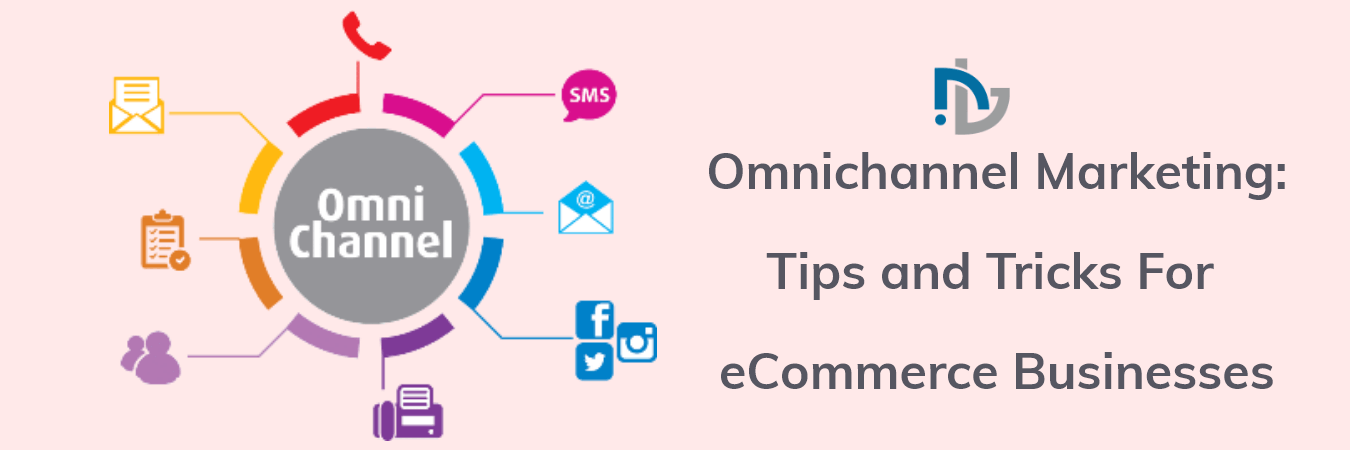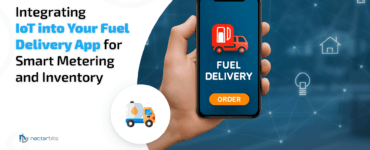Consumerism, as we know it today, has completely changed from what it used to be a few years ago. Back then, people knew exactly what they wanted. Today, things have changed. Consumers like to navigate through different channels before making a purchase decision.
This is where omnichannel marketing comes to play. Omnichannel marketing offers an integrated experience to customers across various channels. Be it your website, mobile app, social media platforms, emails, or even your physical store. Omnichannel marketing is about offering a unified and coherent shopping experience across all these channels.
Omnichannel marketing helps customers the ability to search through your products and make a purchase anytime, anywhere. It also offers the ability for customers to switch between two channels seamlessly. These factors lead to better sales and increased visibility for your eCommerce business.
Moreover, consumers today expect to have the freedom to shop from the channel that is desirable to them. Offering an omnichannel experience helps the consumers have the freedom to have a unified shopping experience.
In this guide, let’s discuss how you can launch and manage omnichannel marketing for your eCommerce business to ensure maximum profitability.
1. Identify the Right Channels
To offer the best possible omnichannel experience, it is important to start with the right channels. It is crucial that you pick channels that appeal to your customers and not the other way round.
The best way to go about it is to research your target audience and create ideal customer personas. Based on your findings, you can decide the best channels that are most appealing to your audience.
You can also research your existing customer base and identify the channels that they most likely hang out on. Identifying the right channels is the key to managing the omnichannel marketing for your eCommerce business. Without this step, everything else may go in vain.
2. Use Buyer Journey Mapping
As a part of building your omnichannel marketing campaign, it is important to map your buyer journey from different platforms. Starting from brand awareness to brand advocacy, a customer goes through various steps along the journey and is likely to make contact with you across different channels.
The Buyer journey ideally starts with the awareness stage, where the customer becomes aware of your brand and your products for the first time. The marketing channels that play a role in this stage of the customer journey would be social media platforms, native advertising, etc.
Similarly, the purchase stage may consist of different sets of channels such as your eCommerce website, mobile app, social media platforms, emails, etc.
Based on the current customer behavior, you can map your buyer journey and use the key primary channels in each stage as a part of your omnichannel marketing campaign. This will help you achieve the best ROI from your marketing efforts.
3. Segment Your Target Audience
Customer segmentation should also be a crucial part of any eCommerce business’s omnichannel marketing strategy. Segmentation involves segregating your target customers into different segments in order to target each group with the best possible messaging.
Segmentation can be a highly beneficial process that increases your conversion rate because it helps you personalize the approach and target each segment with messaging that appeals most to them.
Instead of a generic approach that holds true for every target customer, segmentation can help you attract and retain more customers. Customer segmentation can be achieved with the help of data analytics or Customer Relationship Management (CRM) tools.
4. Leverage Social Commerce
Social commerce is the process of selling products directly via social media platforms such as Facebook, Instagram, etc. This can be done with the help of shoppable posts that allow customers to browse through products and shop directly from these social media channels.
Social commerce is one of the best ways of providing a seamless shopping experience to your customers. Instead of landing on your eCommerce website or mobile app to browse through your products, customers can shop while they are browsing through social media platforms.
You can use social commerce by setting up shoppable posts on different social media marketing channels. You can also offer personalized recommendations to customers by showing them the products that they may have previously taken a look at or added to their cart. This will also increase the chances of conversion.
5. Offer Omnichannel Customer Support
Offering omnichannel customer support is also a major part of your omnichannel marketing campaign. Though customer support may not directly count as marketing, it plays a vital role in offering a unified and satisfactory experience to your customers.
Gone are the days when customer support was only restricted to channels such as emails and phone calls. To go truly omnichannel with your customer support, you should leverage different channels such as social media and offer live chat support on your website.
Read Also : How customer feedback improve your ecommerce business
You can offer customer support on social media channels such as Twitter by creating handles dedicated to supporting. This way, customers find it much easier to connect with in case of a query or an issue.
Moreover, offering omnichannel customer support also helps with your marketing campaigns. Positive reviews on these social media channels help you attract customers who may be having second thoughts about purchasing from your website.
6. Invest in the Right Marketing Tools
The right marketing stack can truly make a world of difference to the ROI from your omnichannel marketing campaigns. Hence, it is important to invest in the right tools, especially for marketing automation.
Marketing automation tools help you set up workflows and funnels for each customer segment. This will put your entire omnichannel marketing campaign in an auto-pilot mode, thus drastically increasing your lead generation and conversion rate.
Typically, investing in tools that help you with email marketing, customer relationship management, tracking, and analytics, automating order fulfillment, sales funnel builders, etc. will fetch you the best results for your omnichannel marketing campaigns.
7. Use A/B Testing
Testing is another important aspect of running successful marketing campaigns. Not even the best marketer in the world can predict the results of your campaigns. The channels you pick, the approach you take – everything is determined based on existing customer data.
To get better results from your campaigns, you can run A/B tests for different aspects of your campaign. You can run A/B tests for your landing pages, social media ads, email campaigns, in-app messaging, website pop-ups, etc.
Running A/B testing will help you understand your customers’ behavior even better, and this will help you increase your sales and revenue.
8. Ensure Mobile-Friendliness of Your Website
A major part of offering a seamless cc experience is taking a mobile-first approach. Studies have shown that mobile commerce makes up a total of 72.9% of the total eCommerce spends. This is a clear indication of the fact that the majority of purchases are made from mobile devices.
With the rapid boom of mobile commerce, nothing can be more off-putting than an eCommerce website that is not mobile-friendly and responsive. This includes aspects like the speed, performance, and user experience offered by your eCommerce website on mobile devices.
Hence, for running a successful omnichannel marketing campaign for your eCommerce business, you have to develop a mobile-friendly e-commerce website. In fact, your website should be built by taking a mobile-first approach where each of the features and the performance is tested for mobile devices first.
Omnichannel Marketing Strategies Final Thoughts
Having an omnichannel marketing strategy will help you build a strong foundation for your business by thinking long-term. Instead of simply focusing on acquiring new customers, it helps you secure your business’s future by nurturing your existing customers and winning over their advocacy.
The tips and strategies provided in this article will help you launch and manage your omnichannel marketing campaign while ensuring the best possible results.








